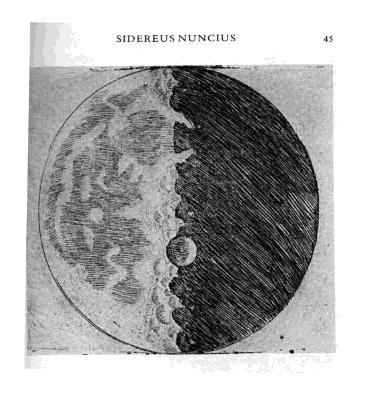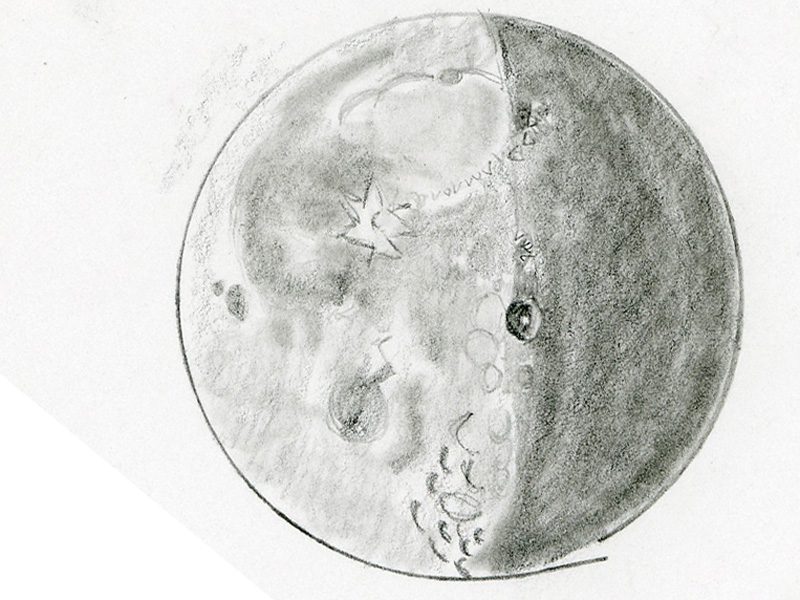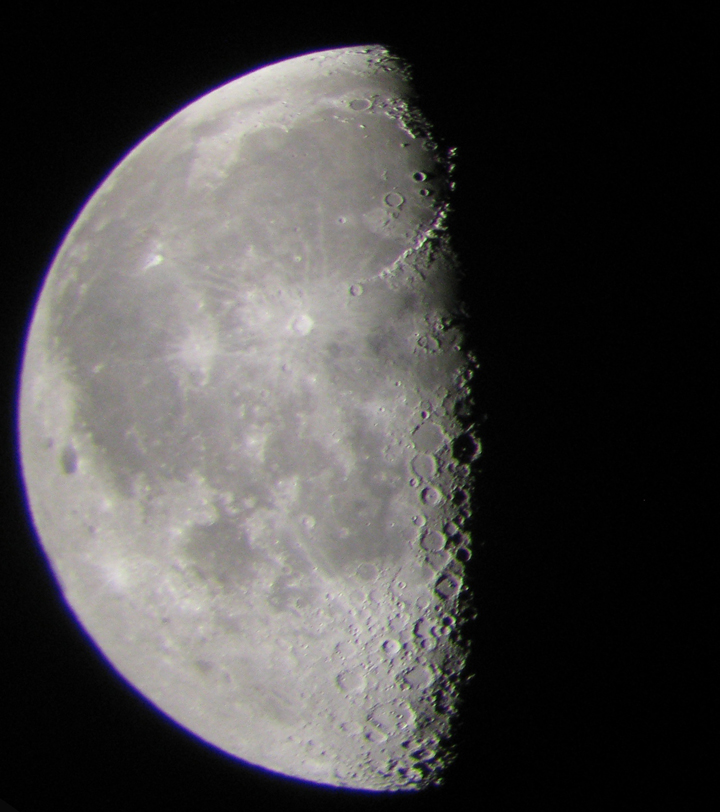Galileo’s drawing of the third quarter moon was made on December 18, 1609 according to widely accepted dates calculated by lunar scientist Ewen Whitaker. He used the solar colongitude and the latitude of the subsolar point on the moon to determine the position of the terminator. You can read more about it here on the Reliving Galileo’s Observations page (sorry, this link is gone as of Oct 2011). Refer to his Journal for the History of Astronomy, Vol. 9, p.155 Galileo’s Lunar Observations and the Dating of the Composition of Sidereus Nuncius article.
You’ll have to scroll through the long article to find the colongitude and solar latitude of the original four engravings and seven small drawings. But you’ll find modern dates with a similar view of the moon. I was delighted to find that my sketch made on July 14, 2009 matched one of the 4 engraving dates!
The predicted “modern” dates refer to the pattern of lighting and the position of the terminator relative to the surface features. Libration will make the craters and other features displaced somewhat with respect to Galileo’s drawings. Most folks do not actually see any resemblance between now and then, but it is a great project – sketching Galileo’s 400 year-old moon in a 21st century way.
There is a quite a bit of agreement about the ”center” crater in Galileo’s sketch. It is most likely Albategnius. It was just on the terminator in my sketch too, and I accidentally made the crater a little larger than it really is. It’s just human nature I guess. Other features I can ID on both Galileo’s and my drawing are Mare Imbrium on both sides of the terminator, including some higher parts of Montes Caucasus lit on the unlit side of the terminator. I also can match the ghostly but well-lit trio of Ptolemaeus, Alphonsus and Arzachel just next to Albategnius on Galileo’s sketch, and I saw and sketched them too. Other sunlit Mare – Humorum (left) and Nubium (right) below Albagetnius also match up nicely.



[...] Another third quarter moon observation July 4th, 2010 | Category: Uncategorized [...]
Thanks for sharing. The photos are nteresting since we are cloud covered with the forest fires ashes from Canada.
Thanks for posting Jane. Will try to look tonight.
[...] 3 Quadrantids will be washed out by the beautiful last quarter moon. Have a look, and enjoy this pretty moon view between hunts for the [...]